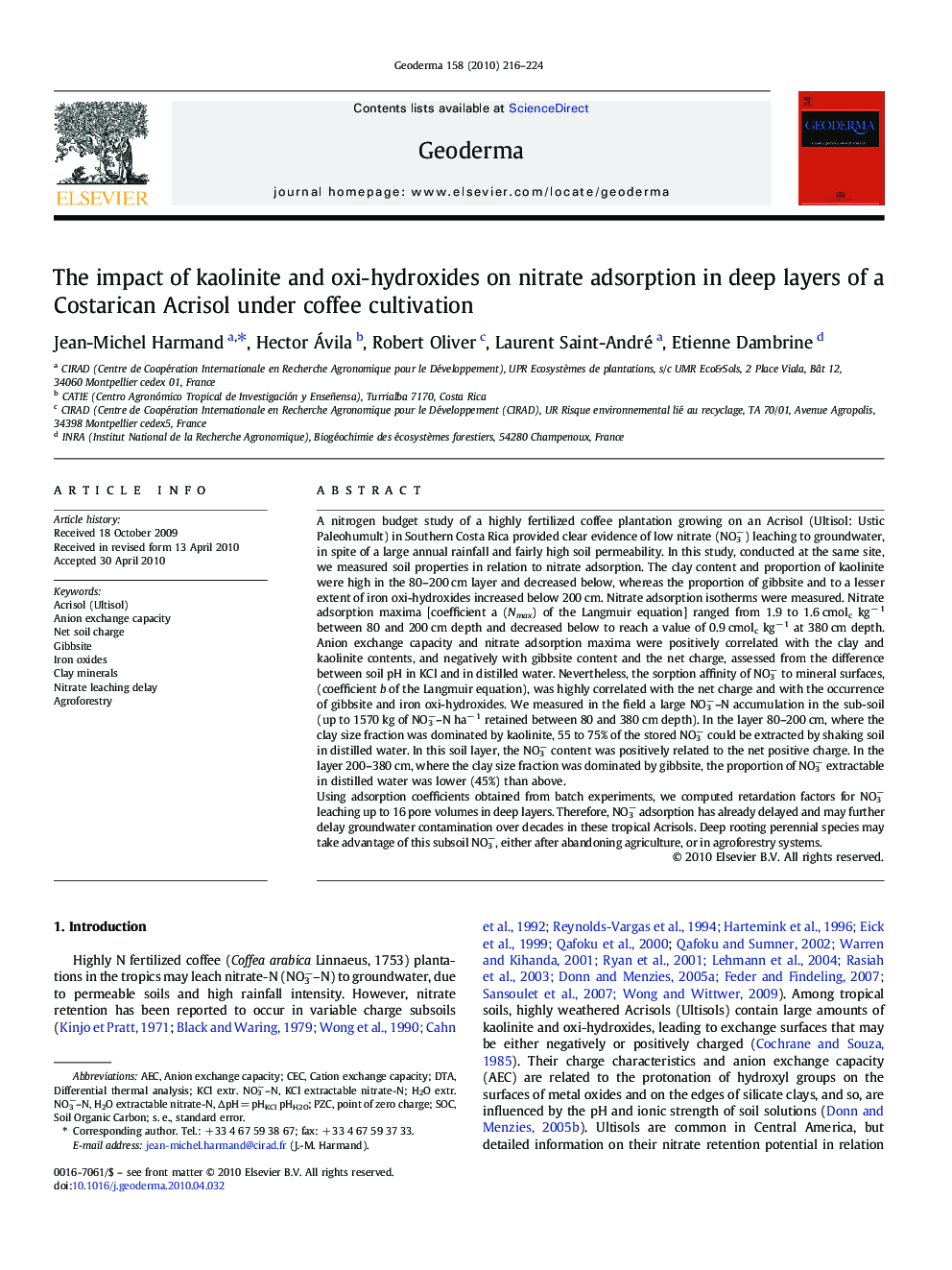| کد مقاله | کد نشریه | سال انتشار | مقاله انگلیسی | نسخه تمام متن |
|---|---|---|---|---|
| 4574330 | 1629517 | 2010 | 9 صفحه PDF | دانلود رایگان |

A nitrogen budget study of a highly fertilized coffee plantation growing on an Acrisol (Ultisol: Ustic Paleohumult) in Southern Costa Rica provided clear evidence of low nitrate (NO3−) leaching to groundwater, in spite of a large annual rainfall and fairly high soil permeability. In this study, conducted at the same site, we measured soil properties in relation to nitrate adsorption. The clay content and proportion of kaolinite were high in the 80–200 cm layer and decreased below, whereas the proportion of gibbsite and to a lesser extent of iron oxi-hydroxides increased below 200 cm. Nitrate adsorption isotherms were measured. Nitrate adsorption maxima [coefficient a (Nmax) of the Langmuir equation] ranged from 1.9 to 1.6 cmolc kg− 1 between 80 and 200 cm depth and decreased below to reach a value of 0.9 cmolc kg− 1 at 380 cm depth. Anion exchange capacity and nitrate adsorption maxima were positively correlated with the clay and kaolinite contents, and negatively with gibbsite content and the net charge, assessed from the difference between soil pH in KCl and in distilled water. Nevertheless, the sorption affinity of NO3− to mineral surfaces, (coefficient b of the Langmuir equation), was highly correlated with the net charge and with the occurrence of gibbsite and iron oxi-hydroxides. We measured in the field a large NO3−–N accumulation in the sub-soil (up to 1570 kg of NO3−–N ha− 1 retained between 80 and 380 cm depth). In the layer 80–200 cm, where the clay size fraction was dominated by kaolinite, 55 to 75% of the stored NO3− could be extracted by shaking soil in distilled water. In this soil layer, the NO3− content was positively related to the net positive charge. In the layer 200–380 cm, where the clay size fraction was dominated by gibbsite, the proportion of NO3− extractable in distilled water was lower (45%) than above.Using adsorption coefficients obtained from batch experiments, we computed retardation factors for NO3− leaching up to 16 pore volumes in deep layers. Therefore, NO3− adsorption has already delayed and may further delay groundwater contamination over decades in these tropical Acrisols. Deep rooting perennial species may take advantage of this subsoil NO3−, either after abandoning agriculture, or in agroforestry systems.
Journal: Geoderma - Volume 158, Issues 3–4, 15 September 2010, Pages 216–224